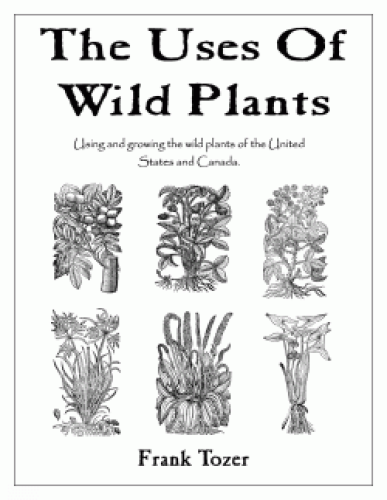by By Frank Tozer
Green Man Publishing, 2007
Frank Tozer is part of a growing group of people who see knowledge of wild plants as an important contribution to our collective future. This pursuit of knowledge need not be just an entertaining hobby, an intellectual curiosity, or a gourmet delight to be sampled occasionally; it can be a vehicle for well-being, an everyday source for the food, medicine, and materials we need to live our lives. In The Uses of Wild Plants, Tozer has created a volume with which to share his knowledge and enthusiasm for these plants.
Tozer offers an encyclopedic treatment, with entries for more than 1,200 species of plants found in North America. These cover both native and non-native plants and even give some new clues for getting rid of pesky invasives like wild parsnip, Pastinaca sativa. (Eat it! Wild parsnip is simply an escaped strain of the garden parsnip. Read the book for details.) The plants are alphabetized by scientific name, but if your Latin is a little rusty, there is an index of common names to help you navigate. Your favorite plant field guide will be handy to have along as well for identification of these plants in the wild.
In each entry, Tozer succinctly supplies the usual edible wild plant information, such as which parts to eat, when to harvest them, cautionary notes, and so on, but this is much more than simply an edible wild plants book. While food is the most common use of wild plants, Tozer’s most interesting entries venture further, exploring the history and potential of these plants as biofuels, animal fodder, fiber and building materials, and more.
Tozer also includes information on how to cultivate many of these plants, often arguing for their use in forest gardens and other forms of semi-wild productive landscaping. In this way, he encourages us to look beyond our current standards for food and material resources, to diversify, with the hope that getting to know and use new wild plants might help us to live more lightly on the land. If we can use what the land naturally offers, we can rely less heavily on the relatively few plants we already know how to use.
The text is accompanied by black-and-white line drawings of selected plants, making it attractive to the occasional browser as well as the intent student of wild plant lore. The book does, however, promulgate one unfortunate standard of wild plant literature: the omission of any references. While Tozer’s experience is surely broad, spanning over 40 years and two continents, this volume cannot be drawn strictly from his own experience, yet he gives us few clues as to where the information has come from, a troubling situation when you’re considering popping a new plant in your mouth. Nevertheless, this volume is packed with information that will surely enrich your rambles in the forests and fields and, with any luck, fill your plate when you return home for dinner.


